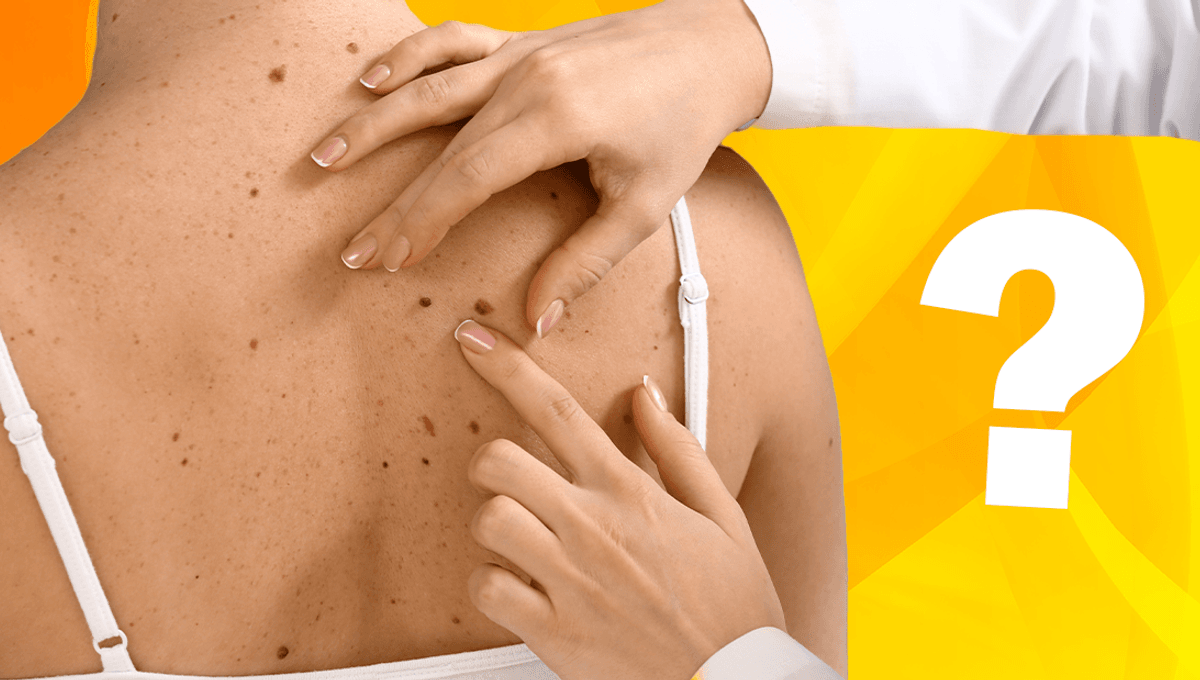-
Web sayfası bildirimcisi
- EXPLORE
-
Sayfalar
-
Blogs
-
Forums
Skin Moles: What Are They And When Should You Get Them Checked?

Skin Moles: What Are They And When Should You Get Them Checked?
Moles – most of us have at least one, and let’s be honest, a lot of the time, we get so used to them that it’s easy to forget that they’re there. However, they’re worth paying attention to – but when should we do so, and how do we know when they’re a problem?
A mole, also known as a nevus (moles = nevi), is a type of skin growth caused by the clustering of melanocytes, the type of cell that produces melanin, the pigment that gives our skin, eyes, and hair color. “Growth” might sound worrying, but this is what’s known as a benign growth, meaning it’s harmless. However, while the biology underlying the development of moles is still not fully understood, there’s evidence to suggest that having certain atypical types of moles – large and/or irregularly shaped – or having a lot of moles can put someone at increased risk of developing a type of skin cancer called melanoma. This kind of cancer can sometimes develop in an existing mole – which is why it’s important to use sun protection, as ultraviolet light from the Sun can cause DNA damage that increases the risk of cancer – but that tends to be rarer. Instead, nearly 70 percent of melanomas appear as new growths elsewhere on the skin. Not every new mark that pops up or change to an existing mole is cancerous; these things can occur for a number of reasons, including during periods of hormonal change like pregnancy. However, given the potential risk, it’s recommended to check your own skin on a regular basis, usually once a month. The prospect of finding something might seem scary, but getting to know your skin means you’re more likely to spot any potentially harmful changes sooner. According to the American Cancer Society, the best time to check your skin is after a bath or shower – you’re going to need to check the entirety of your skin, so it helps to do it at a time when you’re already starkers. Then, all you’ll need is a well-lit room, a full-length mirror so you can see your whole body, a handheld mirror to look at those hard-to-see bits (yes, that means parts like your genitals – everywhere means everywhere), and someone to help you see places like your back and scalp. Once you’ve got that sorted, it’s a matter of carefully looking over your skin, taking note of any marks like moles, freckles, birthmarks, and blemishes. Many people find it helpful to take photographs to make it easier to spot any differences the next time they check their skin. As for what kinds of changes to look out for, one useful way of remembering is to use the ABCDE guide: The ABCDE guide. Image credit: GraphicsRF.com/Shutterstock.com If the answer to any of these is “yes”, then it’s worthwhile booking an appointment to see a doctor. Other features to look out for that they may want to know about include changes in texture, sores that are itchy, bleed, and/or don’t heal within a few weeks, and marks developing a flaky or crusty appearance. Not all skin cancers will have these characteristics – some melanomas can be smaller than 6 millimeters, for example – but it’s a good place to start. All “explainer” articles are confirmed by fact checkers to be correct at time of publishing. Text, images, and links may be edited, removed, or added to at a later date to keep information current. The content of this article is not intended to be a substitute for professional medical advice, diagnosis, or treatment. Always seek the advice of qualified health providers with questions you may have regarding medical conditions. What actually is a mole?
When should moles get checked?
How to check your own skin



